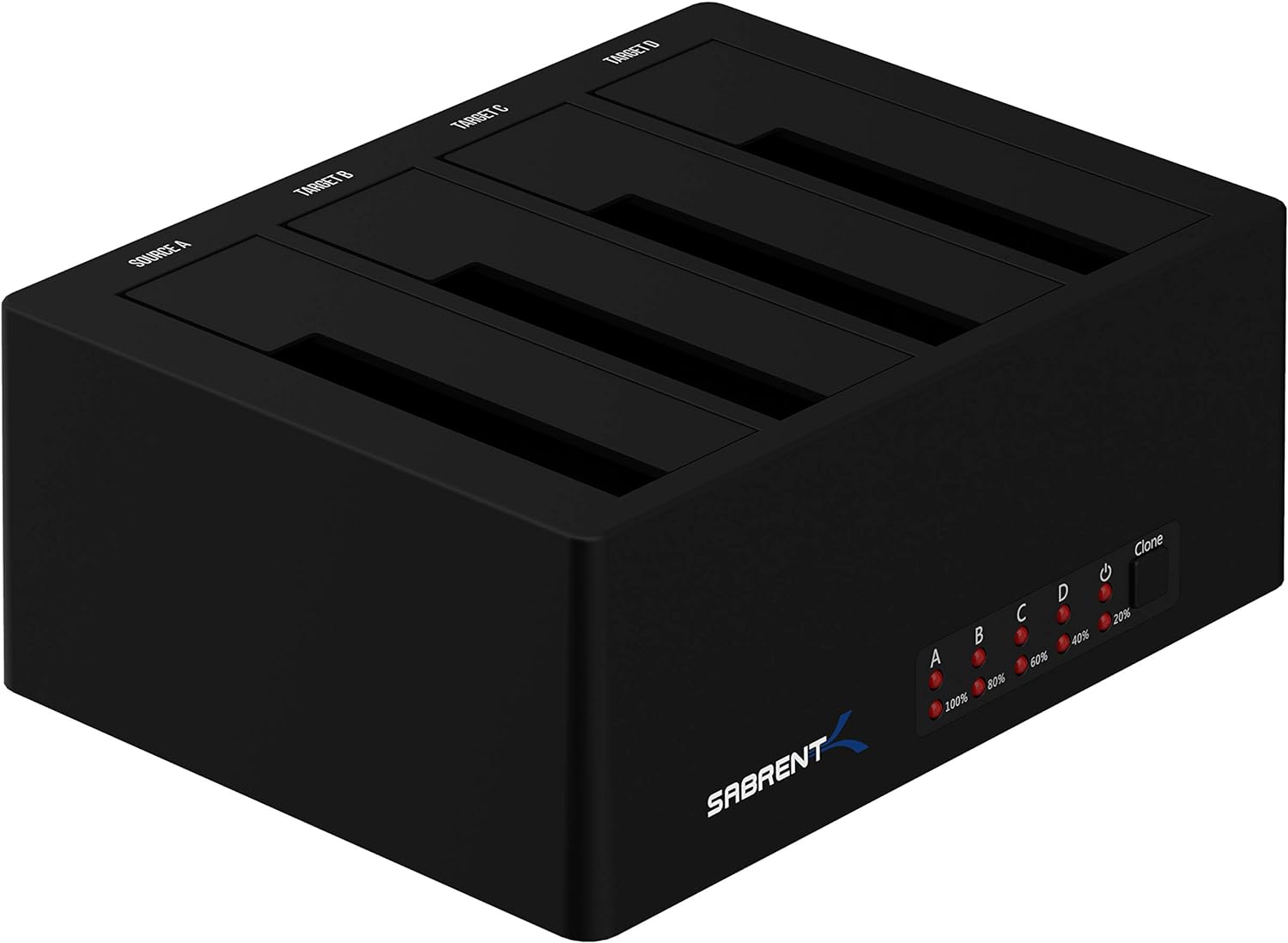Showcasing Your Achievements: Key Elements for a Stellar Bug Bounty Portfolio
Effectively Presenting Your Cybersecurity Milestones

Hey, BugBustersUnited community! As bug bounty hunters, we all know the thrill of discovering vulnerabilities and making the digital world safer. However, it’s not just about finding bugs—how you present your findings and achievements can significantly impact your career. This is where a well-structured bug bounty portfolio comes into play.
A detailed and well-presented portfolio is essential for several reasons:
Opening Up New Opportunities
Your portfolio is a professional showcase that demonstrates your skills, expertise, and accomplishments to potential employers, clients, or collaborators. It serves as tangible proof of your capabilities, setting you apart from others in cybersecurity. Whether you’re looking for new job opportunities, freelance projects, or collaborations with other security professionals, a compelling portfolio can be the key to unlocking these doors.
Enhancing Credibility
In the competitive world of cybersecurity, credibility is everything. A meticulously crafted portfolio adds weight to your claims of expertise and experience. By detailing your significant discoveries and contributions, you show that you are not just another bug bounty hunter but a dedicated professional committed to advancing cybersecurity. This credibility can lead to more recognition in the community and greater trust from those who rely on your skills.
A Powerful Tool for Career Advancement
A well-maintained portfolio is a dynamic tool that grows with your career. It documents your journey, highlighting the milestones and achievements that define your professional path. This not only helps in securing new roles but also in negotiating promotions and raises. When your achievements are clearly outlined and supported by detailed case studies, it becomes easier to demonstrate your value to current and prospective employers.
We will explore how to select and present your achievements effectively in your bug bounty portfolio. We will discuss the importance of including detailed case studies of significant vulnerabilities discovered, contributions to security tools or publications, and any recognition or rewards received from bug bounty programs. By the end of this guide, you’ll have a solid understanding of how to build a portfolio that showcases your skills and helps you advance in your cybersecurity career.
Stay tuned as we delve deeper into the components of an impressive bug bounty portfolio and provide practical tips to help you craft yours. Let’s get started!
Selecting Your Achievements
Building a compelling bug bounty portfolio starts with selecting the right achievements to showcase. It’s not just about listing everything you’ve ever done; it’s about highlighting the most significant and impactful accomplishments demonstrating your skills and expertise. Here’s how to identify which achievements to include in your portfolio:
Criteria for Selecting Achievements
- Impact of Discovered Vulnerabilities:
- Severity: Prioritize vulnerabilities that had a high impact on the security of the target. Focus on critical and high-severity issues that could have led to significant security breaches if left unaddressed.
- Resolution: Include vulnerabilities that led to substantial security improvements or changes within the target organization. This shows that your work has tangible, positive outcomes.
- Scope: Consider the breadth of the vulnerability. Issues affecting a large portion of the target’s infrastructure or multiple services are particularly noteworthy.
- Complexity of the Issues:
- Technical Challenge: Highlight vulnerabilities that require advanced technical skills and deep understanding to identify and exploit. Complex issues demonstrate your problem-solving abilities and expertise.
- Innovation: Showcase instances where you used innovative techniques or novel approaches to discover and exploit vulnerabilities. This reflects your creativity and forward-thinking in cybersecurity.
- Recognition Received:
- Awards and Acknowledgments: Include any formal recognition, such as awards from bug bounty programs, mentions in security bulletins, or public acknowledgments from organizations. These accolades validate your skills and contributions.
- Leaderboards: If you’ve earned top spots on bug bounty leaderboards, make sure to highlight these achievements. High rankings indicate consistent performance and expertise.
- Testimonials: Share testimonials from security professionals, program managers, or organizations you’ve worked with. Positive feedback from respected figures in the industry adds credibility to your portfolio.
Emphasize Quality Over Quantity
While it might be tempting to list every vulnerability you’ve discovered, it’s crucial to focus on the quality of your achievements rather than the sheer number. A portfolio that highlights a few well-documented, high-impact cases will be far more impressive than one cluttered with minor findings.
Here’s why quality matters:
- Clarity and Focus: A concise portfolio lets you tell a compelling story about your skills and accomplishments. It helps potential employers or collaborators quickly grasp your expertise.
- Professionalism: Demonstrating that you can identify and prioritize significant issues reflects well on your professional judgment and analytical skills.
- Depth of Knowledge: Focusing on detailed case studies of complex issues shows that you have the depth of knowledge required to tackle challenging problems rather than just surface-level understanding.
Selecting the exemplary achievements for your bug bounty portfolio is about showcasing the most impactful, complex, and recognized work you’ve done. By focusing on quality over quantity, you create a powerful narrative highlighting your expertise and value as a cybersecurity professional.
Crafting Detailed Case Studies
A well-crafted case study can powerfully showcase your expertise and achievements in bug bounty hunting. You demonstrate your technical skills and ability to communicate complex information effectively by providing detailed accounts of significant vulnerabilities you’ve discovered. Here’s a step-by-step approach to writing compelling case studies for your bug bounty portfolio.
Step-by-Step Approach to Writing Case Studies
Introduction and Background Information:
Example:
Introduction: The target was a leading e-commerce platform with millions of users worldwide. As part of their bug bounty program, I aimed to identify and report security vulnerabilities that could potentially harm their operations and user data.2. Methodology:
- Tools and Techniques: Detail the tools and techniques you used to discover the vulnerability. This might include specific software, scripts, or manual testing methods.
- Process: Walk through the steps you took to identify and exploit the vulnerability. Be specific about your actions, such as scanning, reconnaissance, and testing.
Example:
Methodology: I utilized Burp Suite for intercepting and analyzing web traffic. The initial reconnaissance involved mapping out the site's structure and identifying key entry points. I then used SQLmap to test for SQL injection vulnerabilities in various input fields.3. Discovery and Exploitation:
- Vulnerability Details: Clearly describe the vulnerability you discovered. Include technical details such as the type of vulnerability, affected components, and how it can be exploited.
- Exploitation: Explain how you exploited the vulnerability to demonstrate its impact. Include any payloads or scripts used and the results obtained from the exploitation.
Example:
Discovery and Exploitation: During the testing phase, I identified a blind SQL injection vulnerability in the search functionality. By injecting payloads into the search input, I was able to execute arbitrary SQL commands. This allowed me to access the database and retrieve sensitive user information, including email addresses and hashed passwords.4. Impact:
- Severity: Assess the severity of the vulnerability and discuss the potential consequences if a malicious actor exploits it.
- Business Impact: Explain the broader impact on the organization, such as financial loss, reputational damage, or regulatory implications.
Example:
Impact: The SQL injection vulnerability was classified as critical due to its potential to compromise the entire user database. If exploited, it could lead to significant data breaches, resulting in financial loss and severe damage to the company's reputation.5. Resolution:
- Fixes and Mitigations: Describe the resolution process. Include details on how the organization fixed the vulnerability and any recommendations you provided for mitigation.
- Validation: Explain how you validated the fix to ensure the vulnerability was properly addressed.
Example:
Resolution: I reported the vulnerability to the company's security team, who promptly patched the SQL injection flaw by implementing parameterized queries. Follow-up testing confirmed that the issue was resolved, and I recommended additional security measures such as regular code reviews and automated vulnerability scanning.6. Lessons Learned and Recommendations:
- Reflection: Share any lessons learned from the engagement. Discuss how the experience enhanced your skills or understanding of certain security concepts.
- Advice: Provide recommendations for improving security practices for the target organization and others in similar contexts.
Example:
Lessons Learned and Recommendations: This engagement highlighted the importance of robust input validation and the need for continuous monitoring of web applications. I recommend that organizations implement regular security training for developers and integrate security testing into the software development lifecycle.Tips for Presenting Technical Details Clearly and Effectively
- Use Clear Language: Avoid jargon and overly technical language. Aim to explain complex concepts in simple, clear terms.
- Visual Aids: Include diagrams, screenshots, or code snippets to illustrate key points. Visual aids can help clarify complex processes and make your case study more engaging.
- Logical Flow: Ensure your case study follows a logical flow from introduction to resolution. Each section should build on the previous one, leading to a cohesive narrative.
- Conciseness: Be concise but thorough. Provide enough detail to convey your expertise without overwhelming the reader with unnecessary information.
Detailed case studies are crucial to building a compelling bug bounty portfolio. Following this step-by-step approach, you can create case studies highlighting your significant achievements, demonstrating your technical skills, and showcasing your ability to communicate complex information effectively.
Highlighting Contributions to Security Tools or Publications
Contributing to the cybersecurity community through tools and publications is an excellent way to establish your expertise and authority in the field. These contributions showcase your commitment to advancing cybersecurity knowledge and practices, making you a more attractive candidate for potential employers and collaborators. Here’s how to effectively present these contributions in your bug bounty portfolio.
Presenting Contributions to Open-Source Security Tools
Project Description:
Example:
Project: SecureScan - An Open-Source Vulnerability Scanner
Overview: SecureScan is a tool designed to identify and report vulnerabilities in web applications. It helps security professionals automate the process of vulnerability detection.
Role: Core Contributor - I developed modules for scanning SQL injection and XSS vulnerabilities.2. Key Contributions:
- Specific Contributions: Detail the specific contributions you made to the project. This could include writing code, developing new features, fixing bugs, or improving documentation.
- Impact: Explain the impact of your contributions. Highlight how your work improved the tool’s functionality, usability, or performance.
Example:
Key Contributions: I implemented a new module for detecting SQL injection vulnerabilities, which improved the tool's accuracy and reduced false positives by 30%. I also enhanced the user interface, making it more intuitive and user-friendly.3. Community Engagement:
- Collaboration: Mention any collaborations with other developers or security professionals. Highlight how you worked together to achieve common goals.
- Feedback and Recognition: Include any feedback or recognition you received from the community. This could be user testimonials, mentions in industry publications, or endorsements from respected figures in the cybersecurity field.
Example:
Community Engagement: Collaborated with developers from around the world to enhance the tool's capabilities. Received positive feedback from users, including a mention in a prominent cybersecurity blog as one of the top open-source vulnerability scanners.Presenting Contributions to Research Papers and Articles
Publication Details:
Example:
Publication: "An In-Depth Analysis of Advanced Persistent Threats" by John Doe, Jane Smith
Venue: Published in the Journal of Cybersecurity Research, Vol. 15, Issue 32. Abstract and Key Findings:
- Abstract: Include a brief abstract of the paper or article, summarizing the main research question, methodology, and findings.
- Key Findings: Highlight the key findings and their significance. Explain how the research contributes to the field of cybersecurity.
Example:
Abstract: This paper explores the tactics, techniques, and procedures (TTPs) used by advanced persistent threats (APTs). Through case studies and data analysis, it provides insights into the evolution of APTs and strategies for defense.
Key Findings: The research identified new patterns in APT behavior, suggesting that traditional defense mechanisms need to be augmented with advanced threat detection technologies.3. Your Contributions:
- Role and Responsibilities: Clearly state your role in the research. Specify whether you were the lead author, co-author, or contributor.
- Specific Contributions: Detail the specific contributions you made, such as conducting experiments, analyzing data, writing sections of the paper, or reviewing and editing the manuscript.
Example:
Contributions: As the lead author, I conducted extensive data analysis and wrote the majority of the paper. I also coordinated with co-authors to integrate their findings and ensure the paper's coherence and quality.Highlighting the Importance of Contributions
- Establishing Expertise:
- Demonstrating Skills: Contributions to tools and publications showcase your technical skills and knowledge. They provide concrete evidence of your ability to solve complex problems and advance cybersecurity.
- Thought Leadership: Publishing research and articles establishes you as a thought leader in the field. It shows that you are engaged with the latest developments and actively contribute to the body of knowledge in cybersecurity.
- Building Authority:
- Recognition and Credibility: Being involved in notable projects and publications enhances credibility. It demonstrates that peers and industry leaders respect and value your work.
- Professional Growth: Contributions to the community can open up opportunities for speaking engagements, collaborations, and career advancements. They help you build a professional network and gain visibility in the cybersecurity industry.
Highlighting your contributions to security tools and publications in your bug bounty portfolio can significantly enhance your professional profile. You demonstrate your expertise, commitment to the cybersecurity community, and thought leadership by effectively presenting these achievements. The following section will discuss how to showcase recognition and rewards from bug bounty programs, further bolstering your portfolio.
Showcasing Recognition and Rewards
Recognition and rewards from bug bounty programs are powerful endorsements of your skills and achievements. They validate your expertise and demonstrate your impact in the cybersecurity community. Here’s how to effectively present these recognitions in your bug bounty portfolio.
Presenting Awards
Award Details:
Example:
Award: Most Valuable Hacker (MVH)
Issued By: HackerOne
Date: March 20222. Description and Significance:
- Brief Description: Provide a brief description of the award and its significance. Explain what the award recognizes and why it is important in the cybersecurity community.
- Criteria: Highlight the criteria for receiving the award to emphasize the competitive nature and prestige associated with it.
Example:
Description: The Most Valuable Hacker award is given to the top-performing hacker on the HackerOne platform each quarter. It recognizes exceptional skill in vulnerability discovery, reporting, and collaboration with security teams.
Criteria: Awarded based on the number of valid reports submitted, the severity of the vulnerabilities found, and the overall impact of the hacker’s contributions.Presenting Leaderboards
- Leaderboard Position:
- Ranking: Clearly state your position on the leaderboard.Program or Platform: Mention the specific bug bounty program or platform where you achieved this ranking.Time Frame: Include the time frame during which you held this position.
Leaderboard Position: #1
Program: Bugcrowd
Time Frame: Q1 20232. Significance:
- Achievement Details: Provide details about the achievement, such as the number of participants and the nature of the competition.
- Impact: Explain the significance of the leaderboard position in validating your skills and dedication.
Example:
Achievement Details: Ranked #1 out of over 2,000 active participants in Bugcrowd’s bug bounty program.
Impact: This ranking highlights my consistent performance and expertise in identifying high-severity vulnerabilities across various targets.Presenting Certificates
Certificate Details:
Example:
Certificate: Certified Ethical Hacker (CEH)
Issued By: EC-Council
Date: January 20222. Relevance and Value:
- Description: Briefly describe the certification and its relevance to your bug bounty activities.
- Skills Validated: Highlight the skills and knowledge areas validated by the certification.
Example:
Description: The Certified Ethical Hacker (CEH) certification validates expertise in identifying and addressing security threats.
Skills Validated: Includes proficiency in network security, vulnerability assessment, and penetration testing techniques.Presenting Testimonials
Testimonial Content:
Example:
Testimonial: “John Doe’s contributions to our security program have been invaluable. His keen eye for detail and deep understanding of security principles have helped us secure critical systems.”
- Jane Smith, CISO, TechCorp2. Context and Impact:
- Context: Provide context about the engagement or project that led to the testimonial.
- Impact: Highlight the specific impact or improvements that resulted from your contributions.
Example:
Context: Provided ongoing vulnerability assessments for TechCorp’s critical systems.
Impact: Identified and helped mitigate several high-severity vulnerabilities, significantly improving the organization’s security posture.The Impact of Recognition and Rewards
- Professional Reputation:
- Validation of Skills: Awards, leaderboards, certificates, and testimonials serve as third-party validation of your skills and achievements. They provide tangible proof of your expertise and effectiveness.
- Credibility: These recognitions enhance your credibility in the cybersecurity community, making gaining trust and building professional relationships easier.
- Career Advancement:
- Opportunities: Showcasing these achievements can open doors to new job opportunities, speaking engagements, and collaborative projects.
- Competitive Edge: In a competitive job market, recognizing accomplishments can give you an edge over other candidates, demonstrating your proven track record of success.
Including recognition and rewards from bug bounty programs in your portfolio is crucial for validating your skills and enhancing your professional reputation. You demonstrate your expertise and impact in the cybersecurity field by effectively presenting awards, leaderboard positions, certificates, and testimonials.
Structuring Your Portfolio
A well-structured portfolio highlights your achievements effectively and ensures that your audience can easily navigate and understand your contributions. Here’s how to organize and present your bug bounty portfolio to make it visually appealing and impactful.
Layout and Design of the Portfolio
- Clean and Professional Layout:
- Consistency: Use a consistent layout throughout your portfolio. This includes uniform fonts, colors, and formatting. A clean and professional look enhances readability and presentation.
- Sections and Subsections: Divide your portfolio into sections and subsections. Use headings and subheadings to guide the reader through different parts of your portfolio.
1. Introduction
2. Selected Achievements
- Case Studies
- Contributions to Security Tools
- Publications
3. Recognition and Rewards
- Awards
- Leaderboards
- Certificates
- Testimonials
4. Contact Information2. Visual Appeal:
- Use Visual Aids: Incorporate images, charts, diagrams, and code snippets where relevant. Visual aids can help explain complex information and make your portfolio more engaging.
- Highlight Key Points: Use bullet points, bold text, and highlights to highlight key points and achievements.
Example:
- **Identified and reported a critical SQL injection vulnerability** that exposed sensitive user data, earning recognition in the form of a "Most Valuable Hacker" award from HackerOne3. User-Friendly Navigation:
- Table of Contents: Include a table of contents at the beginning of your portfolio to help readers quickly find specific sections.
- Internal Links: Use internal links (hyperlinks within the document) to allow easy navigation between sections.
Example:
Table of Contents:
1. Introduction [Link]
2. Selected Achievements [Link]
3. Recognition and Rewards [Link]
4. Contact Information [Link]Keeping the Portfolio Up-to-Date
- Regular Updates:
- New Achievements: Continuously add new achievements, case studies, and recognitions as you accomplish them. This keeps your portfolio current and relevant. Revised Content: Periodically review and update existing content to reflect any changes in your skills, experience, or industry standards.
Update Log:
- Added case study on "Cross-Site Scripting (XSS) vulnerability in E-commerce Platform" - May 2023
- Updated leaderboard rankings on Bugcrowd - June 20232. Refining Content:
- Remove Outdated Information: Remove or archive outdated information that no longer reflects your current capabilities or focus areas.
- Enhance Descriptions: Continuously refine descriptions, explanations, and technical details to ensure clarity and impact.
Example:
Before:
- Reported XSS vulnerability in shopping cart.
After:
- Discovered and reported a critical Cross-Site ScriptingBuilding a Powerful Bug Bounty Portfolio
A well-crafted bug bounty portfolio is a powerful tool that showcases your achievements and propels your career in cybersecurity. It highlights your skills, expertise, and contributions in a professional and impactful manner. Let’s recap the importance of a well-structured portfolio and encourage you to apply the tips and techniques discussed to create a compelling and professional showcase of your work.
Recap of Key Points
- Importance of a Well-Structured Portfolio:
- A detailed and well-presented portfolio is essential for bug bounty hunters to effectively showcase their skills and achievements.
- It opens up new opportunities, enhances credibility, and is a powerful tool for career advancement.
- Selecting Your Achievements:
- Focus on high-impact vulnerabilities, complex issues, and recognized contributions.
- Emphasize quality over quantity to ensure a clear and compelling narrative.
- Crafting Detailed Case Studies:
- Follow a step-by-step approach to create comprehensive case studies highlighting significant vulnerabilities.
- Present technical details clearly and effectively to demonstrate your expertise.
- Highlighting Contributions to Security Tools or Publications:
- Showcase your involvement in open-source projects, research papers, and articles.
- Highlight the impact and significance of your contributions in establishing your expertise and authority.
- Showcasing Recognition and Rewards:
- Include awards, leaderboard positions, certificates, and testimonials to validate your skills and achievements.
- Demonstrate the impact of these recognitions on your professional reputation.
- Structuring Your Portfolio:
- Ensure your portfolio is visually appealing, user-friendly, and easy to navigate.
- Keep it up-to-date and continuously refine its content to reflect your latest achievements and skills.
Encouragement to Start Building or Enhancing Your Portfolio
Now that you understand the key components and strategies for building a powerful bug bounty portfolio, it’s time to take action. Whether starting from scratch or enhancing an existing portfolio, applying these tips and techniques will help you create a compelling and professional showcase of your achievements.
Community Engagement
Members and visitors of the BugBustersUnited community, we invite you to share your experiences, tips, and feedback on building and using bug bounty portfolios. Your insights can help fellow hunters improve their portfolios and achieve tremendous success. Share your usage, the good and the bad, and anything else that can contribute to our community’s growth and improvement in bug bounty hunting.
- What strategies have worked well for you in building your portfolio?
- What challenges have you faced, and how did you overcome them?
- Do you have any unique tips or techniques that others might find helpful?
By sharing our knowledge and experiences, we can all learn from each other and continue to advance in the ever-evolving field of cybersecurity. Thank you for being part of the BugBustersUnited community, and happy hunting!






